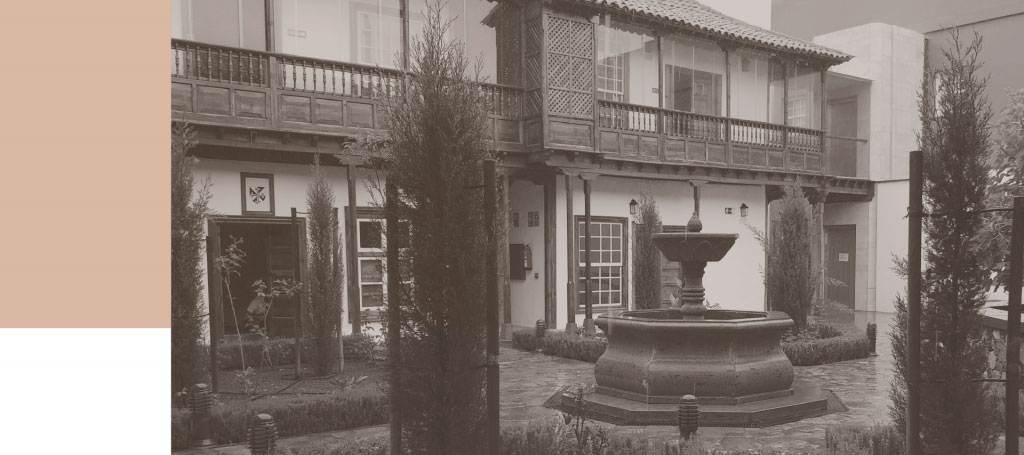The History of the Convent of Santa Catalina de Siena
The Convent of Santa Catalina de Siena is the oldest of the two convents of cloistered nuns belonging to the Dominican Order in the Canary Islands. Located in San Cristóbal de La Laguna, the convent opened on 23 April 1611, thanks to the altruism of Juan Cabrejas, governor of La Palma, and his wife María de Salas, who finally helped to materialise the idea which had been circulating in the city since the previous century to create a convent for cloistered nuns.
Wishing to satisfy the desires of their daughter, who had consecrated her life to God in the Dominican Order, in 1600 Juan Cabrejas and María de Salas decided to purchase the dilapidated and abandoned residence of the hidalgo and conquistador Alonso Fernández de Lugo, the governor of the Canary Islands, which was located next to the square now called Plaza del Adelantado. Construction work started in 1606 on the various buildings in which the future nuns would live.
The convent welcomed its first nuns five years later, in 1611. The wife of the founder, who took on the name of Sister María de la Pasión, and her daughter, Sister Florencia de San Juan, were the first inhabitants of the convent together with four other nuns.
With the passing of time the small, simple convent grew to accommodate around one hundred nuns, becoming one of the most important on the island. During the seventeenth century, the convent enjoyed such prosperity that it was forced to expand.
For this purpose it acquired adjacent buildings and plots of land until it grew to become the convent we know today. Located next to the monastery housing the monks of the Dominican Order, the convent enjoyed an enviable emplacement in the old quarters of the city.
The reason why the convent is so well-known today is largely owing to the fact that it contains the tomb of Sister María de Jesús de León Delgado, known as La Siervita, the Handmaid of God. Currently in the process of beatification and canonization, Sister María de Jesús was a simple, humble woman who consecrated her life to God. Her wonderful and miraculous powers, of which there are many accounts throughout her lifetime, aroused great fascination among all those who knew her, not just in the convent but also much further afield.
La Siervita died on 15 February 1731. Three years later, during the exhumation following a petition by Amaro Pargo to offer her eternal rest in a polychrome wooden coffin which he commissioned expressly for the purpose, her body was found incorrupt. Her incorruptibility is displayed annually on the anniversary of her death, attracting thousands of devotees every year, and making her one of the most venerated nuns from the Canary Islands.



